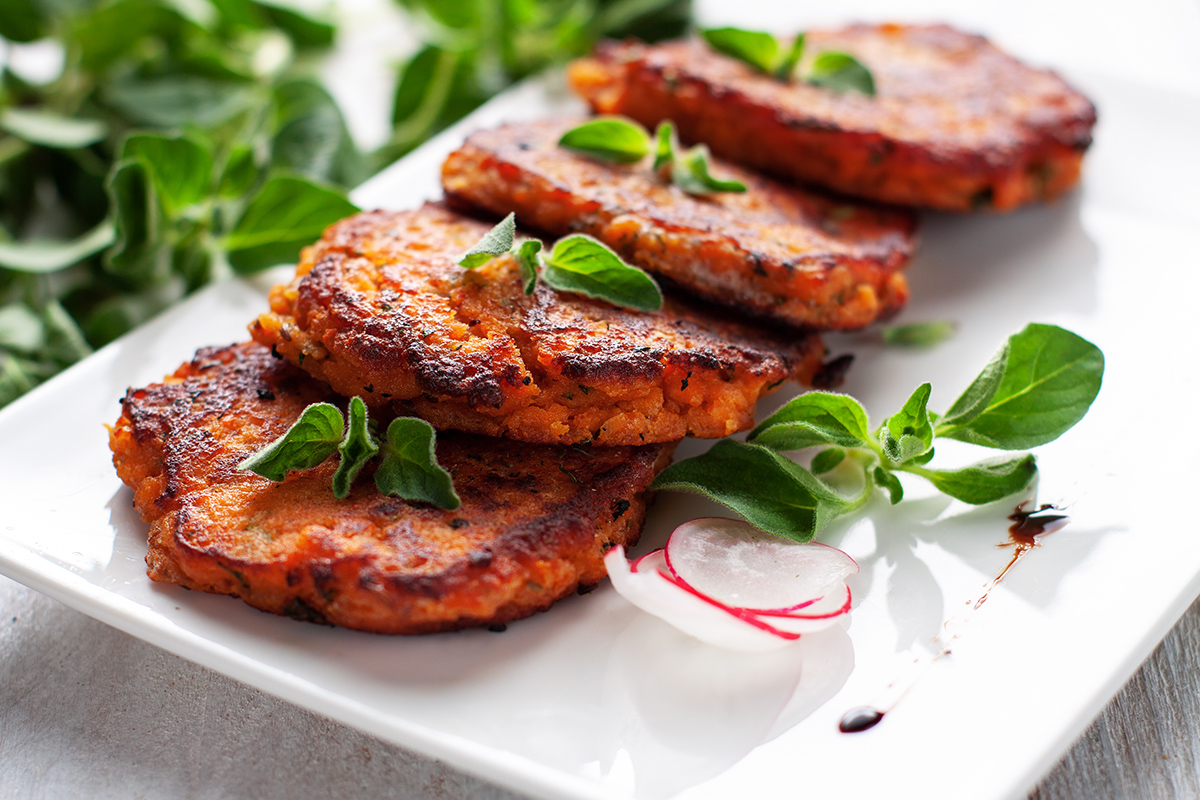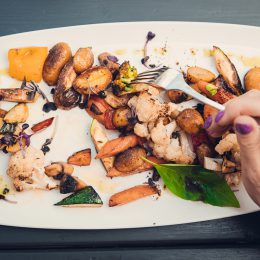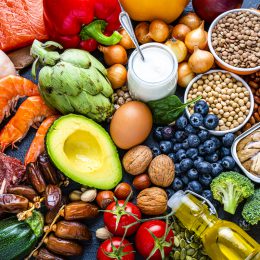4 Convenience Foods You Should Be Eating, According to Dietitians
Taking shortcuts doesn’t always mean missing out on key nutrients. These nutritionist-approved packaged foods are proof. 
In an ideal world, we’d all prepare three meals a day, seven days a week, enjoying the entire ritual. In reality, few people have the time or desire to do that, which is why store-bought convenience foods can be so helpful.
First, let’s clear up some confusion: The words “packaged” and “convenience” are often associated with foods that deliver little to no nutritional value. But that’s not always the case, says Bonnie Taub-Dix, R.D.N., creator of BetterThanDieting.com and author of Read It Before You Eat It: Taking You from Label to Table. “There are plenty of packaged staples we can keep at home that have a lot of nutritional benefits and make it easier and quicker to prepare healthy meals and snacks.”
Plus, stocking your kitchen with healthy convenience foods that have a longer shelf life can reduce the number of trips to the supermarket each week, Taub-Dix says. That’s especially helpful for older adults with mobility issues that can make shopping a challenge, she adds. You might also find that you waste less food, since you don’t need to worry about spoilage in the same way you do with fresh foods such as fish and vegetables.
The bottom line: Packaged foods can have a place in your healthy diet. The four super convenient items below are proof. Add them to your grocery list and get ready to enjoy extra free time each week.
Healthy Convenience Food #1: Canned Salmon
Casting your line for canned salmon makes it easier than ever to eat more omega-3 fatty acids, known as healthy fats, without going through the trouble of cooking fish. Why that’s good: Research shows that including omega-3 fatty acids in your diet can help reduce the risk of heart disease, fight inflammation, and even keep your skin looking hydrated and healthy.
What’s more, a 2021 review published in Nature Communications found that people who had greater levels of omega-3 fatty acids in their blood — specifically the type you get from fatty fish such as salmon — had up to a 13 percent lower risk of dying from any cause, compared to people with lower levels of omega-3 fatty acids.
Canned salmon is also a valuable source of high-quality protein, with about 22 grams per 3-ounce serving, says Randi Weissberger, R.D., L.D.N. Weissberger is a dietitian in Bethesda, Maryland, whose specialities include the nutritional needs of older adults. Canned salmon is also a hearty source of vitamin D, which plays a key role in keeping your bones strong, she notes. Your body makes vitamin D when exposed to the sun, but “many people don’t get enough sunshine to make adequate amounts of vitamin D, so any food source is beneficial,” Weissberger says.
How to use canned salmon:
- Tuck it in sandwiches
- Add on top of salads
- Use in place of ground beef for meatloaf or meatballs
- Mix with pasta and prepared frozen veggies, along with a dollop of store-bought pesto
- Use it as a convenient base for salmon burgers
Healthy Convenience Food #2: Frozen Riced Vegetables
These are made by pulverizing foods such as cauliflower or broccoli into rice-size pieces. A bag of frozen riced vegetables makes it easy to add more nutrient-rich veggies to your day while also cutting carbohydrates. “This can be especially helpful for those trying to lose weight or when there’s a need to limit carb intake to better manage blood sugar levels,” Weissberger says.
One ¾-cup serving of riced cauliflower has 20 calories and 4 grams of carbs, while the same amount of cooked white rice has 150 calories and 33 grams of carbs. And since riced veggies take up the same amount of space on your plate as regular rice, you shouldn’t feel like you’re depriving yourself, Weissberger says.
What’s more, vegetables that will be frozen are picked at peak ripeness, when they’re the most nutritious, and then frozen and packaged within hours. That means you don’t lose out on nutrient content when you choose frozen veggies over fresh.
You can find frozen riced veggies at most grocery stores. While riced cauliflower is the most common option, some brands also offer riced broccoli or blends of cauliflower and other vegetables such as sweet potato, carrots, onions, peas, and more. Buy the plain version and add your own seasonings or try a flavored bag such as Parmesan garlic or spicy Spanish style. Just be sure to check the label, as some flavorings sneak in added sugars or a lot of sodium.
How to use frozen riced veggies:
- Make it a stand-alone side dish
- Use as a base for stir-fry or a burrito bowl
- Add to filling for tacos
- Swap it in for rice in fried “rice”
- Stir into scrambled eggs
- Add to a pot of chili
- Make veggie hash browns
Healthy Convenience Food #3: Frozen Whole-Grain Waffles
Stirring up batter and dusting off the waffle maker is a chore typically reserved for leisurely weekends. But with frozen waffles, you can enjoy them within minutes any day of the week! The key is picking a whole-grain option.
Before you buy, make sure the first item on the ingredient list is a whole grain, Taub-Dix says. It may be whole wheat, whole barley, or whole oats — the key is having the word “whole” in front of it. Unlike refined grains (white flours) that are stripped of some fiber and nutrients during processing, whole grains contain all three nutrient-packed components of wheat that’s fresh off the plant: the germ, endosperm, and bran layer.
“The extra nutrients and fiber you get from whole grains can keep you feeling full and satisfied for longer and also help stabilize blood sugar levels,” Taub-Dix says.
Plus, research in The Journal of Nutrition found that over time, older adults who ate at least three servings of whole grains per day had smaller increases in key risk factors of heart disease, including waist size, blood pressure, and blood sugar levels, compared to people who ate less than half a serving per day.
Make it easier to fit in those three servings per day by stocking whole-grain waffles in your freezer.
Subscribe to our newsletter
It's quick and easy. You could be one of the 13 million people who are eligible.
Already a member? Click to discover our 15,000+ participating locations.
Follow Us
How to use frozen whole-grain waffles:
- For a quick well-balanced breakfast, Taub-Dix recommends spreading cottage cheese or almond butter on a prepared waffle and topping with sliced banana
- For another well-balanced breakfast, top a toasted waffle with ½ cup plain Greek yogurt and some fresh berries
- Use a waffle as a base for a fried egg, in place of toast
- For lunch or dinner, make a waffle pizza with tomato sauce, sliced cooked chicken, and shredded mozzarella. Stick it under the broiler for a few minutes to melt the cheese.
Healthy Convenience Food #4: Hummus
Hummus is a favorite store-bought dip among nutritionists since it’s full of ingredients you can feel good about.
“The main ingredient of hummus is chickpeas, and it delivers a good mix of protein and fiber, making it a snack that will keep you feeling fuller longer,” Taub-Dix says. “And eating more protein with your snacks [or anytime] can help support maintaining muscle mass for healthier aging,” she adds.
The other star ingredient is tahini, a sesame seed paste that’s high in calcium, selenium (a mineral that helps decrease inflammation and promotes immune health), and phosphorus (important for maintaining bone health).
The only caveat: There’s a huge selection of hummus varieties these days, and they’re not all equal in terms of nutrition. Look for an option with a short ingredient list of only whole foods (chickpeas, tahini, lemon, garlic, spices, and maybe heart-healthy oils such as olive or avocado oil). A great hummus doesn’t include a lot of extra ingredients you can’t pronounce.
When you find a good option, keep it stocked in your kitchen. You might even find that it motivates you to eat more vegetables if you use them as dippers, Taub-Dix notes.
How to use hummus:
- Spread it on sandwiches, wraps, or buns
- Use in place of mayo in tuna, egg, or chicken salads
- Make it the foundation for a creamy dressing (whisk together hummus, olive oil, fresh lemon juice, chopped garlic, salt, and pepper)
- Serve a Mediterranean-inspired layered dip by spreading hummus on a platter and topping it with lentils, chopped veggies such as cucumber and cherry tomatoes, sliced olives, crumbled feta, and a lemony vinaigrette
Take Your Favorite SilverSneakers Classes Online!
SilverSneakers members can access live fitness classes and wellness workshops through SilverSneakers LIVE. See the latest schedule and RSVP for classes here.
Not a member? If you have a Medicare plan, it may include SilverSneakers — at no additional cost. Check your eligibility instantly here.





